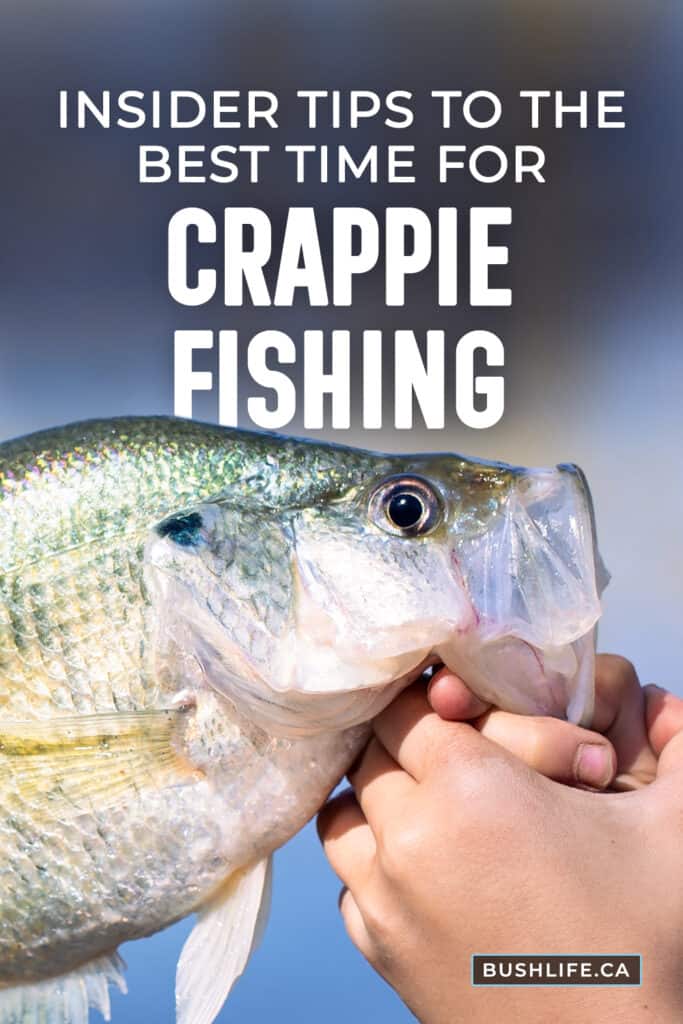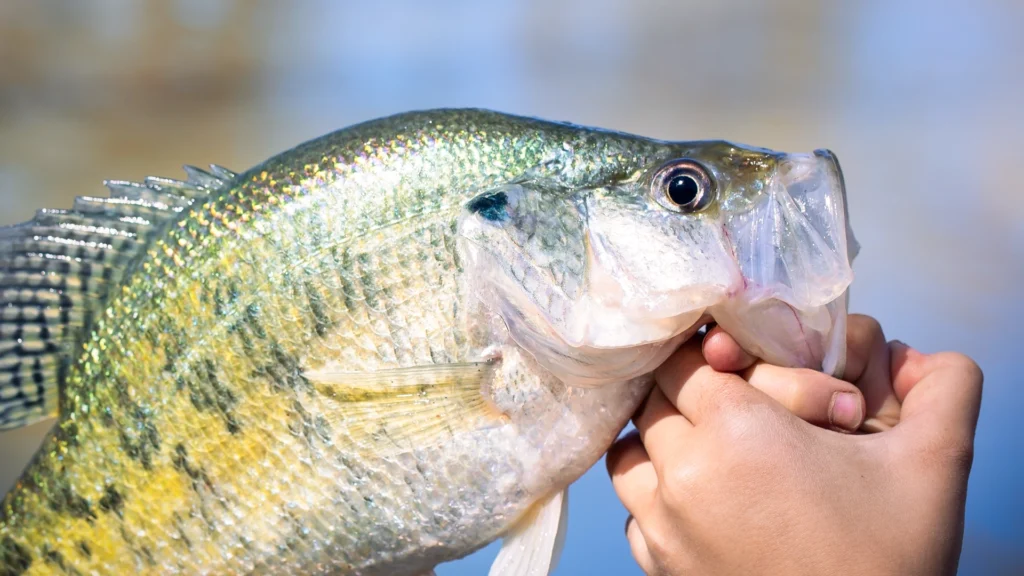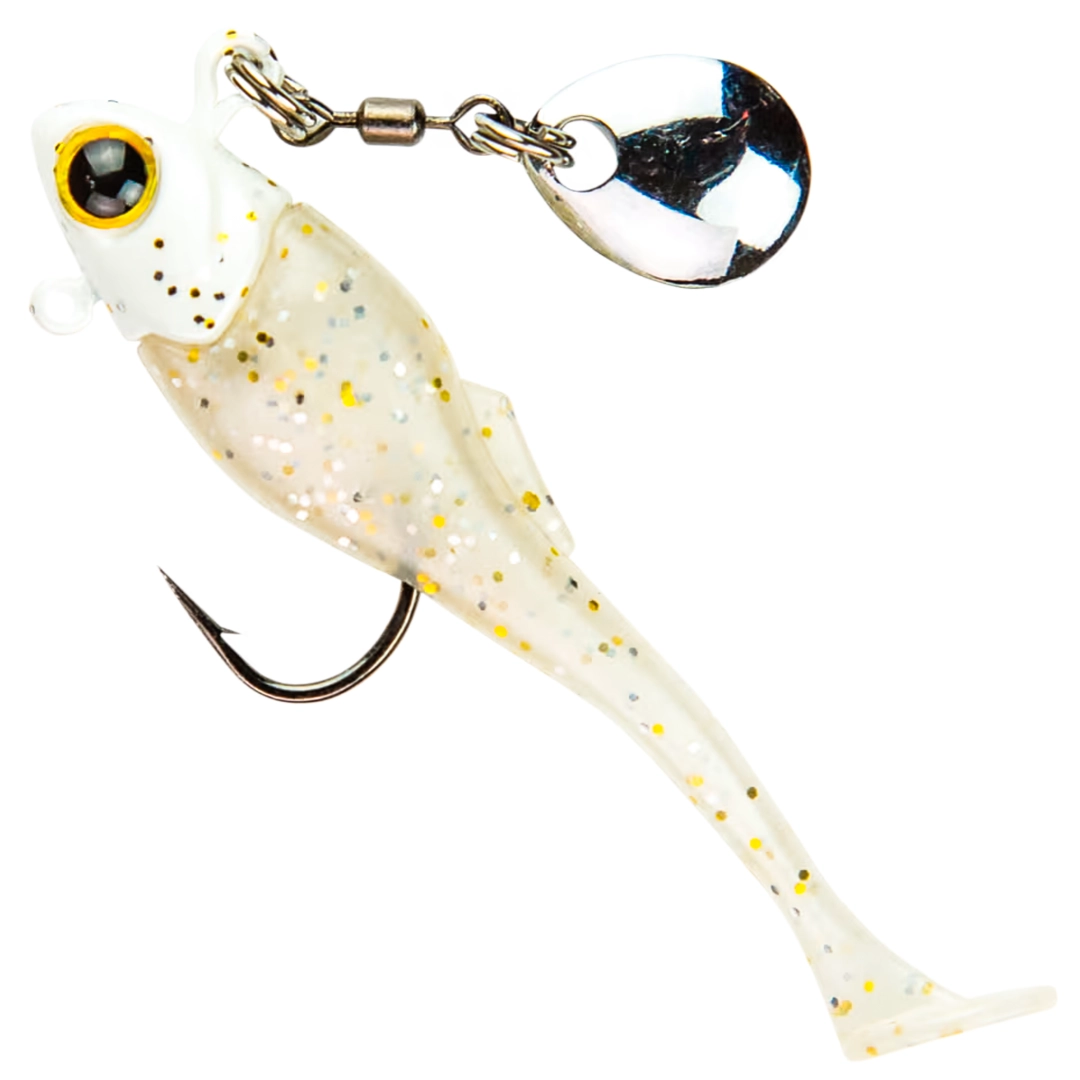Fishing is such an integral activity in our family. Not only is it relaxing, but it’s also thrilling to be able to land the BIG ONE and exaggerate your catch to the anglers around you. But, there are days where no matter what you throw, nothing happens, not even a bite from the smallest of fish. Even after changing your lure, rod and spots a half dozen times. Most successful anglers are familiar with various tactics and techniques and know when to play and when to take the day to clean their reels or dust off their prized trophy fish from 20 years ago. Knowing what resources are needed is half the battle. The other… BEHAVIOUR – not yours, the fish’s! For example, spawning, habitat, feeding and environment all play major roles in the success of your fishing trip. Once you understand a crappie’s behaviour, gauging the best time for crappie fishing will be easy.
Spread the Love
Disclosure: Posts may contain affiliate links. Purchases made through our links result in a small commission to us at no charge to you. We only recommend products that meet our brand standards based on testing and first hand use by our authors.
This post is designed to help beginner crappie anglers understand the Crappie fish species and provide insights into the crappie spawning season, best time of day to catch crappie fish, location, tackle, techniques, and required gear to fish for crappie.
- How Crappie Behave During the Best Time for Crappie Fishing
- What Affects Crappie Activity
- What is the Best Time of Day to Crappie Fish?
- Best Locations for Crappie Fishing
- PRO TIP
- Techniques for Catching Crappie
- How To Fish For Crappie – Seasonal Techniques
- Crappie Fishing Regulations and Limits in Ontario
- Essential Gear for Crappie Fishing
- Crappie Fishing Guide for Beginners
- Final Thoughts on When is the Best Time to Fish for Crappie
How Crappie Behave During the Best Time for Crappie Fishing
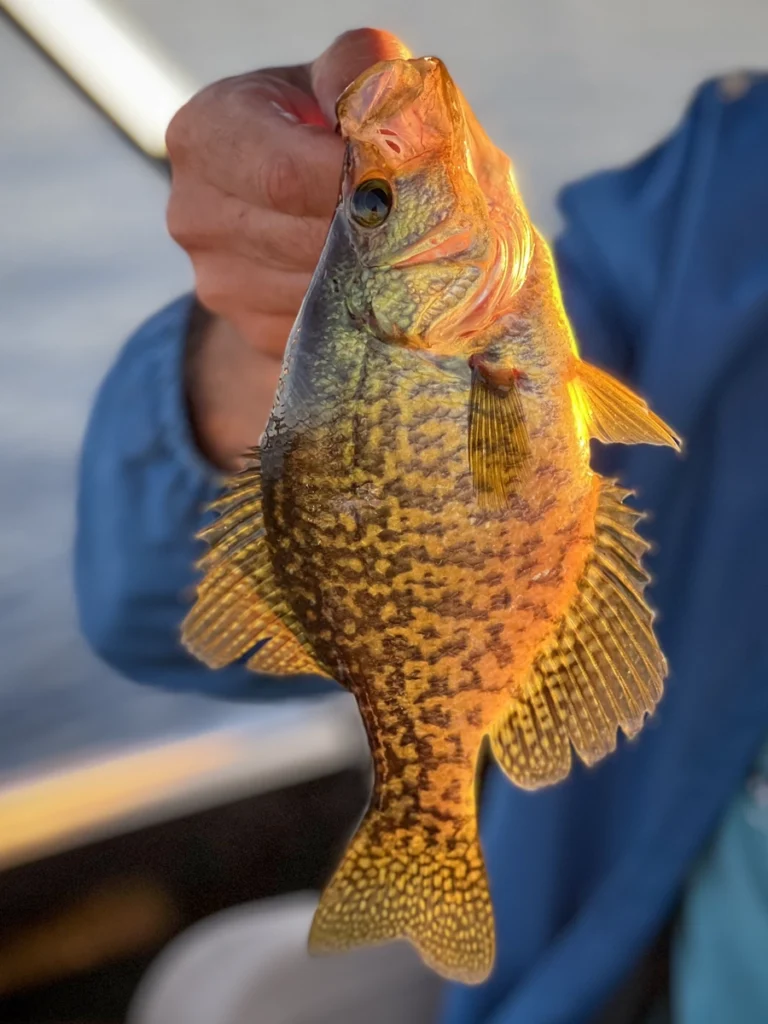
Seasoned Crappie anglers know that crappie fishing is one of the most exhilarating experiences. Whether large or small, these fish are feisty. It is one of the reasons that children love fishing for crappie. There is nothing sweeter than watching my son and his pro fishing buddy getting ready and counting down to the bite.
Crappies are known to be highly active during specific periods, which vary depending on the time of year and environmental factors. Crappie fishing spots are anything structural – this species loves stumps, fallen trees, rocky areas, stake beds, weed lines, submerged vegetation and shorelines.
Spring – Crappie Spawning Season
Crappie spawn time is early spring. Fishing in the spring is during the pre-spawn period, when the water reaches the high 50s, the crappie follows bait fish towards shallower water to feed and spawn.
During the crappie spring spawn, they move into schools and spawn in beds 2 to 8 feet deep over sand or gravel bottoms. This becomes the best time of year for crappie fishing for seasoned anglers and beginning crappie fishermen to target them. As the water temperature rises, they become more aggressive as they search for food.
Summer – Not So Energetic
Once into the summer months, crappie behaviour changes. They are more spread out in open water and tend to move to deeper, cooler waters to escape the heat. They also become less energetic during the day, making early morning and late evening the best time of day to crappie fish during the summer months.
Fall – Feeding Frenzy
During the fall crappie fishing season, expect the behaviour to be similar to spring fishing. Big schools of crappie move back towards shallower waters in preparation for winter.
As the water temperature drops, they become aggressive. Their feeding activity increases, making this another best time to crappie fish in the fall. It’s also the time of year when you can expect to catch larger crappie in 6 to 14 ft of water.
Winter – Chilling Out
As in the summer, during the winter, the crappie are also more spread out and found in deeper water of 10 to 35 feet. In these months, they are not aggressively searching for food.
What Affects Crappie Activity
As with any fish, environmental factors play a huge role in crappie fishing success and how crappie responds to your bait.
What is the Best Time of Day to Crappie Fish?

Technically, you can fish for crappie whenever you want to, but I can’t guarantee that you will be successful. The best time of day for crappie fishing is determined by weather and time of year.
Best time to catch crappie are early mornings and late evenings, which is usually a two-hour window.
In the summer months, you’ll be rewarded with a third opportunity for which the best time of day to fish for crappie will be at night. During these periods, crappie are more active and actively feeding. The low light conditions make them more comfortable and less wary, increasing your chances of success. The cooler temperatures also contribute to their activity level and willingness to bite.
Overcast or cloudy day crappie fishing is another best time to catch crappie. The reduced sunlight make crappies feel more secure and encourages them to venture out of their hiding spots. They are also more likely to be found near structures or shallower waters.
Bright and sunny days can make crappies more skittish and less likely to bite. If you are fishing during these conditions, try targeting shaded areas or deeper waters where crappie might seek relief from the heat.
It’s also worth noting that crappie feed more actively during periods of low barometric pressure, which often occurs before a storm or change in weather conditions. The chop of the water also helps with their activity level.
The moon also plays a crucial role in when crappies bite. I find that fishing during a full or new moon works like magic.
Best Locations for Crappie Fishing
Every body of water is different, and with practice, you will begin to recognize the signs of finding the best crappie fishing locations. For instance, I love bass fishing and walleye fishing more than crappie, and as I fish our favourite spots, just before the sun starts to set, you can see rings and ripples appear on the water’s surface. That there is a sign that crappie is actively feeding.
As you watch the ripples, over time you see that they move in a certain direction and pace. Keep coming back to that location for the next few days, and if the activity level is the same, congratulations, you’ve found yourself a crappie hotspot!
While you are learning to recognize the signs, for lake crappie fishing, start your search at the mouth of a bay or near creek channels.
Crappie Fishing in Ontario
If fishing for Black crappies, they can be found throughout the southern part of Ontario as well as parts of Northern Ontario, where the water is clear, warm and with lots of vegetation.
White crappies, on the other hand, are typically found in weedy, sheltered bays in Southern Ontario. In the US, they are pretty much everywhere.
Techniques for Catching Crappie

Once equipped with the right fishing gear, you will need to learn and master some different tactics for catching crappie. Here are some crappie fishing techniques that have proven effective in helping you catch crappie on your next fishing trip.
1. Vertical Jigging:
Easily one of the most popular techniques for crappie fishing. Cast your line into the water column and retrieve it with small, subtle movements. Crappies are attracted to erratic behaviour and often strike when the jig is paused or falling.
Have you tried the 6th Sense Fishing Pluck Hair Jig yet? This game-changer features a vibrant chartreuse minnow color that crappie can't resist! Weighing in at 1/8 oz, it's perfect for those precise casts. The white and yellow feathers add a touch of flair while mimicking the natural movement of baitfish, giving it an incredibly lifelike appearance underwater. And let's not forget about the sharp hook that ensures a solid hookset every time!
2. Casting and Retrieving:
Casting and retrieving small crappie jigs or soft plastic baits can also be effective, especially when targeting crappies near structures or along drop-offs. Cast your lure near the structure and retrieve it slowly, varying the speed and depth until you find what works best.
3. Slip Bobber Fishing:
Using a slip bobber allows you to suspend your crappie bait at a specific depth, keeping it in the strike zone longer. Attach a small bobber stop above your hook, adjust the depth, and cast your bait near structures or along weed lines. Crappies are known to be attracted to stationary baits suspended just above their heads.
4. Trolling:
If you’re fishing from a boat, trolling is a great way to cover a larger area and locate active schools of crappies, especially in the summer. Use small jigs or 2 to 3-inch crankbaits and zigzag at a slow speed of 1 to 2 mph, varying your depth until you get bites.
5. Live Bait Fishing:
Crappies are known to be voracious feeders, and using live bait can be highly effective. Hook a live minnow or worm through the lips or thread it onto a small jig head. Allow the bait to swim naturally or use subtle movements to entice a strike.
The 6th Sense Fishing Pecos Underspin Jig in platinum white with realistic 3D eyes and sharp hook, is a game-changer for your fishing adventures! The attention to detail on this jig is incredible - those 3D eyes really make it stand out underwater, attracting even the most cautious crappie. Plus, the 6th Sense Fishing Pecos Underspin Jig comes with 5 Pecos Swimbaits, giving you everything you need for a successful day on the water.
How To Fish For Crappie – Seasonal Techniques
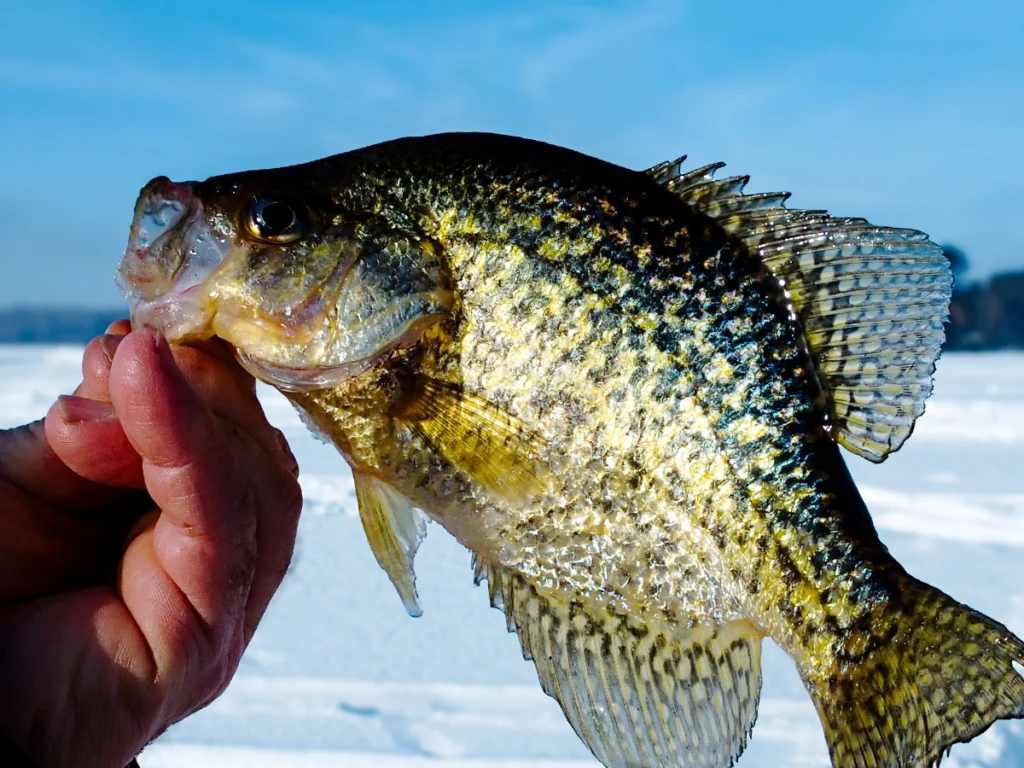
Spring Crappie Fishing
The best month for fishing crappie is when your body of water’s temperature is between 65 – 72°F. In most cases this would be May, June and early fall, sometimes April if you’re a further south. Most crappie anglers will target these fish at depths of 4 to 14 feet of water.
Winter Crappie Fishing
Since they are not aggressively searching for food, the best crappie ice fishing method during the winter months is to use a slow vertical jigging technique with a live minnow. You will have to let the bait hang for a little longer to entice the crappie to make a play for it.
Summer Crappie Fishing
In the summer, when the crappies are more spread out, trolling with a crankbait is your best bet to finding them, or if you have a fish finder, look for 10 to 35-foot water columns and throw a jig into it.
Crappie Fishing Regulations and Limits in Ontario
I can only speak to Ontario, where crappie fishing is open all year. Keep in mind that your possession limits will vary based on the type of fishing license that you have. For Sport Fishing license holders, your possession limit is 30. For those with a Conservation license, your limit is 10.
If you live outside Ontario, please check with your local fishing authorities, province or state, as your regulations or restrictions may differ.
Essential Gear for Crappie Fishing

If you are new to crappie fishing and would like to try your hand, the gear you require is minimal and does not need to be expensive.
The only thing to remember is to keep your gear ultralight! Crappies have small mouths and are small in size unless you catch yourself a monster crappie. Here is a list of the needed fishing gear for crappie.
1. Fishing Rod and Reel
Your crappie fishing rod and reel should be a lightweight spinning rod and reel combo. The rod tip should be sensitive enough to detect subtle bites but also have enough backbone to handle larger crappies. A 7 – 8 foot, medium-fast action rod with a 500 to 1000 reel size is ideal.
2. Fishing Line
Opt for a lightweight fluorocarbon or monofilament line with a test strength between 4 – 8 pounds.
3. Hooks and Bobbers
Use a #4 or #6 fishing hook to accommodate the small mouths of crappies. For beginners, I suggest attaching a small bobber to help detect bites and keep your bait at the desired depth.
4. Best Crappie Bait and Lures
Light tackle is best used for fishing crappies. Opt for small jigs, panfish baits, soft plastic baits, spinners, and live minnows or worms. Experiment with different colours and sizes to see what the crappies are biting on in your area. For us, we found the best crappie bait to be jigs. The best jigs for crappie fishing to be a 1/16 oz yellow or white ball head crappie jig with a white or yellow tail.
5. Tackle Box
Invest in a tackle box like the Plano Edge to keep your gear organized and easily accessible. It’s also a good idea to include a variety of jigs, soft plastics, hooks, and weights to cover different fishing scenarios and for quick replacement should you lose a hook to cover or a soft plastic to the crappie.
6. Polarized Sunglasses
Although not a necessity, polarized sunglasses do help reduce glare and allow you to see beneath the water’s surface, making it easier to spot submerged structures or schools of crappie.
Crappie Fishing Guide for Beginners
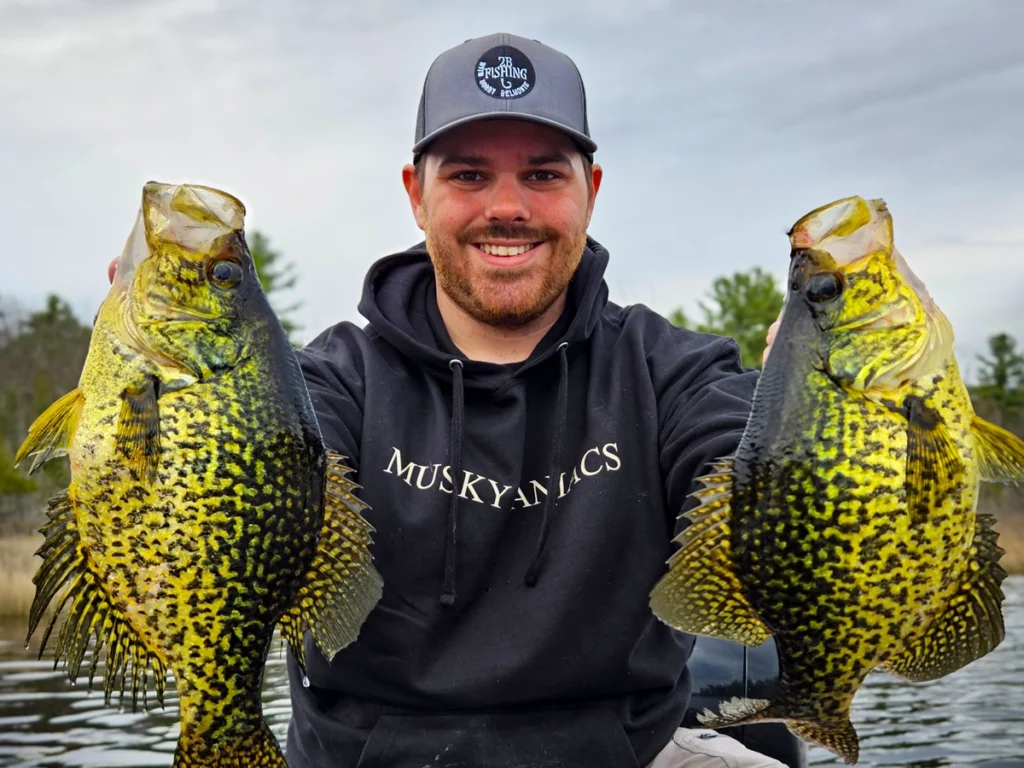
If you’re dreaming of reeling in a monster crappie on your next crappie fishing trip, consider hiring an expert crappie guide to show you the ropes during the best time to fish for crappie.
A fantastic crappie fishing guide in Ontario is Bobby Belmonte.
Whether you’re a beginner angler or a seasoned pro, Bobby Belmonte from 2B Fishing offers the perfect experience in the Peterborough area, just 2 hours northeast of Toronto. You’ll be casting into the waters of the Kawartha Lakes to learn how to catch crappie, new techniques and crappie fishing tips to enhance your fishing game.
Bobby offers over 15 years of experience and offers flexible scheduling options. Don’t worry about bringing your gear, as 2B Fishing will provide the rods and tackle! All you have to bring is yourself, maybe a buddy and your license. Be prepared to be led into the biggest catches of your life! Click here to book your outing.
Final Thoughts on When is the Best Time to Fish for Crappie
As with any fish, paying attention to environmental changes, adjusting techniques and adapting quickly will yield a successful crappie fishing experience. With plenty of patience and practice, you will also learn how to recognize when the crappie feeds actively and what the best time for crappie fishing in your area is.
Once you learn to locate the school and implement the techniques correctly, you can expect to catch a good number of fish fairly quickly. It’s one of the main reasons crappie fishing is an exciting sport. When the bite is on, it’s truly on!
I hope you enjoyed my crappie tips for beginners post. What’s your favourite time of day to fish for crappies?
Bookmark this post on Pinterest for future reference!
